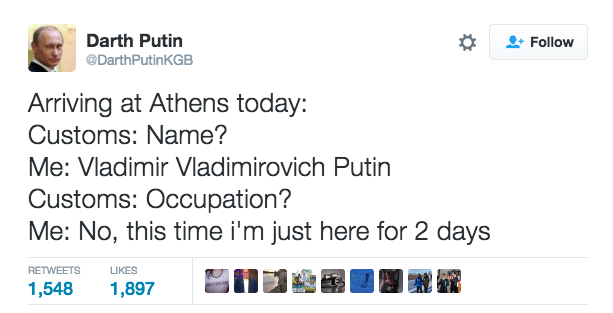The proliferation of internet-connected mobile phones, in theory, is bringing the world together — with people continents apart talking and sharing, fueled by the sweet nectar of social apps. But in some cases, those connections turn into collisions. Within just the last three weeks, three big American social media platforms — Instagram, Snapchat, and Twitter — have all butted up against the laws and cultural norms of local populations outside the United States.
On May 16, Iranian authorities made a sweep of women who had been posting photos to Instagram that were “promoting Western promiscuity.” What kind of photos? Selfies. The young women and models had posted pictures of themselves that showed their hair while wearing Western fashions. The women had their accounts suspended or were even arrested by police. One woman who was particularly popular on Instagram fled to Dubai. Another woman, who was known for her dyed blonde hair, was forced to apologize in court over her photos. Authorities said over 170 people involved in fashion or modeling were being investigated, and they have put together a database of hundreds of accounts they are watching.
Iranian Model, Elham Arab, answering to Tehran attorney for posting her pictures without scarf on Instagram
On May 20, Indian comedian Tanmay Bhat used a popular Snapchat tool to create a scene of a famous cricket player and a famous singer trading insults at each other. What was the tool? Face-swap. Bhat is potentially in trouble for a unique issue: India’s laws around manipulating people’s photos (“morphing”) make Snapchat’s face-swap feature a legal gray area. But even if he’s in the clear legally, the public was still outraged over the disrespect shown to beloved and venerated celebrities. A top political party member threatened to beat him up. And now, Indian law enforcement is looking into how to get the video scrubbed from the internet.
On May 30, a bunch of Twitter accounts were simultaneously deactivated. Why? They all made fun of Putin or the Russian government. One popular parody account, @DarthPutinKGB, would be hard-to-impossible to mistake for actual impersonation. (It even had the word “parody” in its bio.) They were later reinstated without explanation. Yet while Twitter won’t comment on why the accounts went down, the clear implication is that they ran afoul of elements in the Russian government.

The culture clashes are in some ways larger problems than the legal issues, and speak to and call into question the essential aspects of each platform. Each has its own particular flavor of homegrown culture. Twitter has always been a place for political speech and satire. Snapchat is cheeky, youthful, and somewhat celebrity obsessed. Instagram is earnest and slightly narcissistic: a place where you curate a more beauty-filtered version of your life.
These distinct platform cultures are distinct from American culture, and yet…they’re sort of not, right? They all began life in California and were shaped and molded by American brands and people (and brand/people), who brought to each platform faint whiffs of Bud Lite, Kardashians, and jorts (our greatest cultural institutions). The green-avatar moment of Westerners showing support for the Iranian protests was a happy side effect of Twitter’s main purpose: to get you to buy more stuff while watching Katy Perry subtweet Taylor Swift.
Farhad Manjoo in the New York Times this week lamented the death of the dream of the internet creating a hunky dory global culture; the tech industry once believed the internet “would bridge vast distances and connect cultures, creating a new system of legal norms that were more uniform around the world. But that’s not how it has been playing out.” This had always been an American vision and dream — of the techno-libertarian flavor — that was trying to force itself on the world as a global dream. Forcing their own ideals and values onto existing cultures is what empires do (in this scenario, imagine Evan Spiegel as Alexander the Great).
Each of these three examples of recent trouble is a reflection of how American-influenced social media culture doesn’t always work internationally. Russia isn’t a place that tolerates political humor at the expense of its leaders. Iran isn’t a place where posting glamorous selfies goes over well. India isn’t a place where impersonating and roasting beloved celebrities is a staple of late-night talk shows, or where it’s perfectly acceptable to take anyone’s photos and manipulate them into a meme.
These platforms are faced with figuring out how to make their products work in other countries. Snapchat could disable the face-swap feature just in India, or Instagram create some sort of protections for women in Iran. Or they could not, and just wait it out, hoping that something will change.
The problem wasn’t that these companies exported American technology; it was that they exported American culture. The controversies in Iran, India, and Russia weren’t fundamentally tech-related at all. They weren’t issues you could solve with faster networks, or universal access, or cheaper smartphones. They were caused by a fundamental disconnect between the cultures and value systems each of these platforms has created and celebrated, and the traditional cultures and value systems that already exist in markets where these big, American tech companies want to expand. And honestly, that’s a much harder problem to solve.
